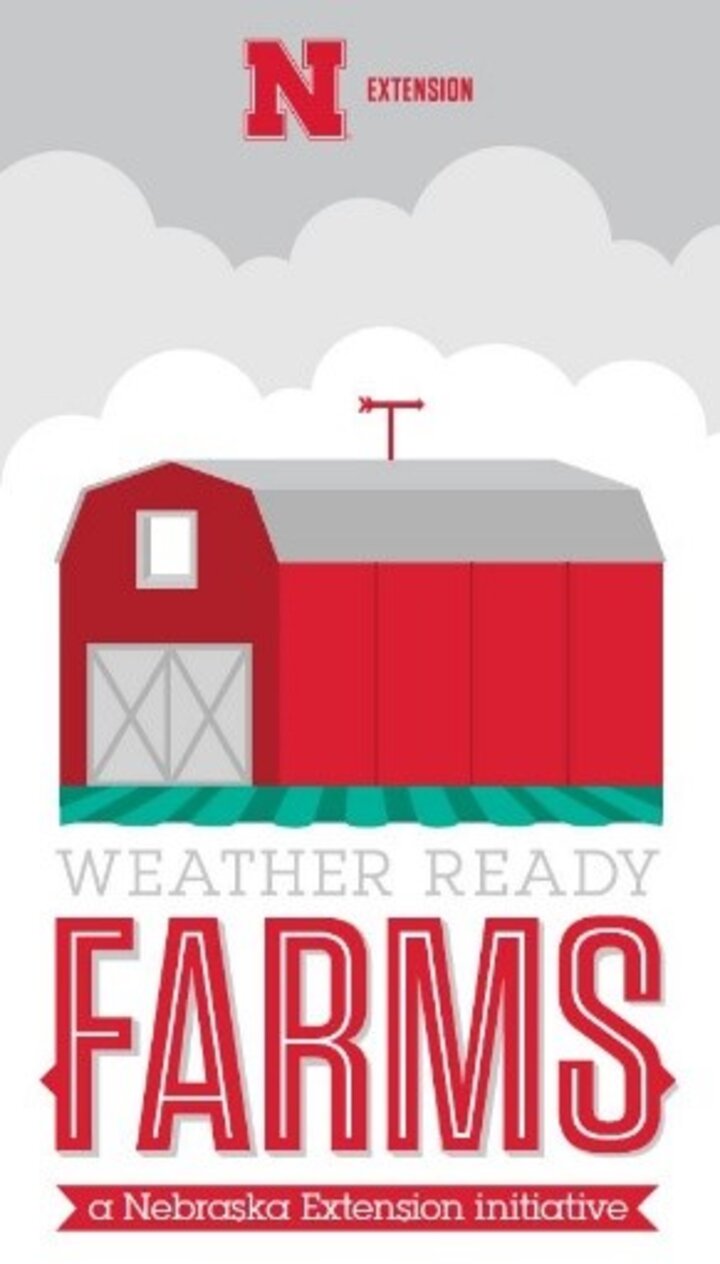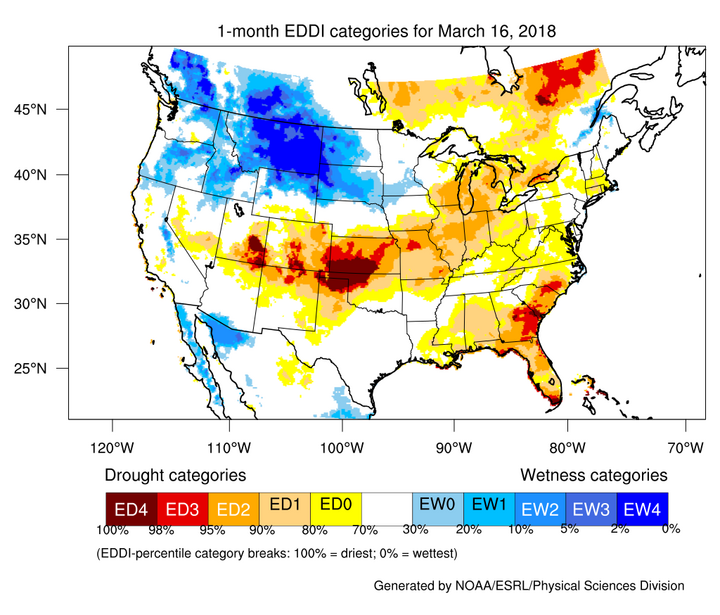Droughts can often occur quickly and without prediction. The temperature, precipitation, and evapotranspiration (ET) patterns during the growing season in the Central Plains create a high risk of rapid soil moisture depletion and short-term drought conditions. The average precipitation in June and July totals 9 inches in southeast Nebraska and 5 inches in the Panhandle. However, the average alfalfa reference ET total for June and July in south central Nebraska is 16 inches (Figure 1). It is evident that soil moisture is key to providing the crop with adequate moisture during these times of high water demand.
The high potential for rapid onset of a flash-drought during the growing season reduces the time allowed for in-season management decisions and preparation. Having a drought plan that incorporates “triggers” or tools to monitor drought conditions may keep growers from getting caught off-guard.
The Drought Monitor, created each week by the National Drought Mitigation Center, provides a collaborative and intensely reviewed depiction of short- and long-term drought conditions (Figure 2). Many farms, ranches, and communities use the Drought Monitor categories as a trigger to begin certain management strategies.
The Evaporative Demand Drought Index (EDDI, Figure 3), for example, is an experimental drought monitoring and early warning guidance tool. This tool provides near real-time information and can signal the early onset of drought conditions or a “flash” drought. Over the last month or two, the Northern Plains has received moisture to reduce the impact of last summers’ drought. There also has been rapid dryness in the Southern Plains. The EDDI shows this transformation to increasing drought in areas around us, while continues to show little impact from drought. Many other tools can be found at the CropWatch Weather Information and Resources page.
Ultimately, the best time to plan for a drought is before the drought happens. No one can be certain what this growing season will bring, but we know a drought is likely sometime in our future. Portions of Nebraska in any given growing season will be susceptible to drought or flash-drought conditions because of the variability in warm season precipitation in the central High Plains region.
Experts from Nebraska Extension and the University of Nebraska–Lincoln can help develop a plan or answer questions related to your concerns. Find an expert at the Nebraska Extension directory.
Weather Ready Farms

Nebraska Extension is committed to helping agricultural producers increase their resiliency to climate variation and extreme weather events through programs and resources that focus on identifying vulnerabilities and prioritizing actions. Weather Ready Farms is an initiative built on preparedness, resiliency, and recovery from extreme weather events in order to make stronger Nebraska farms.



